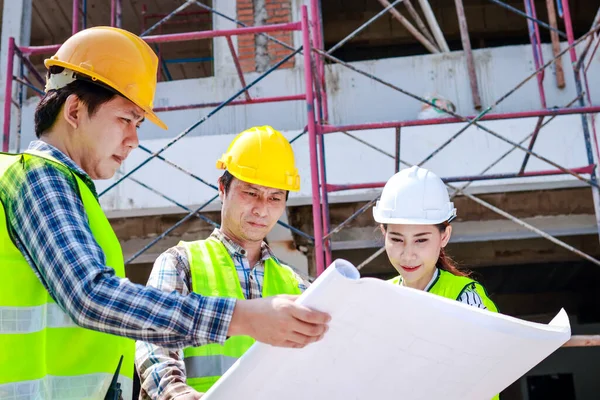Section 94 Explained: Comprehensive Guide For Property Developers And Planners
Navigating the complexities of property development requires a clear understanding of various regulations, one of which is Section 94 of the Environmental Planning and Assessment Act. This legislation plays a crucial role in ensuring that developers contribute to the public infrastructure and community facilities needed to support new developments.
"Understanding Section 94: A Complete Guide for Property Developers" aims to provide developers with essential insights into the purpose, application, and implications of Section 94 contributions. By equipping themselves with this knowledge, developers can better align their projects with community needs while ensuring compliance with local regulations.
What is Section 94?
Section 94 of the Environmental Planning and Assessment Act allows local councils to levy contributions from developers to fund public infrastructure and community facilities. These contributions are essential for managing the impacts of development on local services and resources, ensuring that communities can support the additional population brought by new developments.
Purpose of Section 94 Contributions
The main objectives of Section 94 contributions include:
- Funding Infrastructure: To finance essential infrastructure such as roads, parks, schools, and public transport that may be required due to increased demand from new developments.
- Promoting Sustainable Development: To encourage development that contributes positively to the community while minimizing negative impacts.
- Ensuring Equity: To distribute the costs of public infrastructure fairly among developers, preventing existing residents from bearing the burden of new development.
- Encouraging Community Engagement: To foster collaboration between developers and local communities in planning for infrastructure needs.

How Section 94 Contributions Work
Calculation of Contributions
The amount developers must contribute under Section 94 is determined by various factors, including:
- Type of Development: Different types of developments (residential, commercial, industrial) have different impacts on infrastructure needs.
- Location: The specific location of the development can influence the required contributions, as some areas may have more significant infrastructure deficits than others.
- Development Size: Larger developments typically require higher contributions due to their greater impact on local resources.
- Timing of the Development: Contributions may vary depending on whether the development is phased or a one-time project, reflecting the timing of infrastructure needs.
Local councils usually provide a detailed contributions plan outlining how these contributions are calculated and what they will fund. This plan serves as a guide for developers to understand their obligations and the expected costs associated with their projects.
Application Process
- Development Application (DA): When submitting a Development Application(DA), developers must include information on how their project aligns with the local council's contributions plan. This typically involves detailed planning documents and assessments.
- Assessment: The council reviews the DA, including the proposed Section 94 contributions. This stage often includes consultations with various stakeholders, including community members, to gather input and address concerns.
- Determination: If the council approves the DA, it will specify the required contributions, which must be paid before or upon the commencement of construction. Developers should ensure they understand the timing and conditions of these payments.

Implications for Property Developers
Financial Planning
Developers must factor Section 94 contributions into their financial planning and project budgets. Understanding the expected costs can help avoid unexpected expenses that may arise during the development process. Developers are encouraged to consult with planning professionals or legal advisors to accurately estimate these contributions early in the project lifecycle.
Compliance and Risk Management
Non-compliance with Section 94 requirements can result in significant penalties, including delays in project approvals and potential legal action. Developers should ensure they fully understand their obligations under the Act to mitigate risks. This includes staying updated on changes to local planning laws and contributing plans, as these can evolve based on community needs and council priorities.
Community Relations
Engaging with the local community and understanding their needs can enhance the relationship between developers and residents. Developers who prioritize contributions to local infrastructure can improve community perception and facilitate smoother project approvals. Hosting community consultations, providing updates on the development process, and addressing community concerns can foster goodwill and support.
Best Practices for Developers
Early Engagement and Thorough Documentation:
Early engagement with local councils is essential for developers to clarify Section 94 requirements and streamline the approval process. By discussing project specifics before submitting a Development Application (DA), developers can address potential concerns effectively. Additionally, maintaining thorough documentation of all correspondence ensures transparency and compliance, helping to mitigate risks and facilitate smoother reviews. Read more on Section 94.
Budget Accordingly and Monitor Changes:
Allocating sufficient funds for Section 94 contributions within the project budget is crucial for developers to avoid cash flow issues during construction. Staying informed about changes to planning laws and contribution rates is equally important, as these can affect project costs and timelines. Regularly reviewing updates from local councils and participating in relevant workshops will help developers remain compliant and adapt their budgets as necessary.
Community Involvement and Positive Relationships:
Actively engaging with the local community allows developers to address concerns and build goodwill, fostering a positive relationship with residents. By demonstrating how a development can benefit the area beyond compliance with Section 94 requirements, developers can enhance community support for their projects. This collaborative approach not only helps smooth the approval process but also contributes to long-term project success and community satisfaction.

